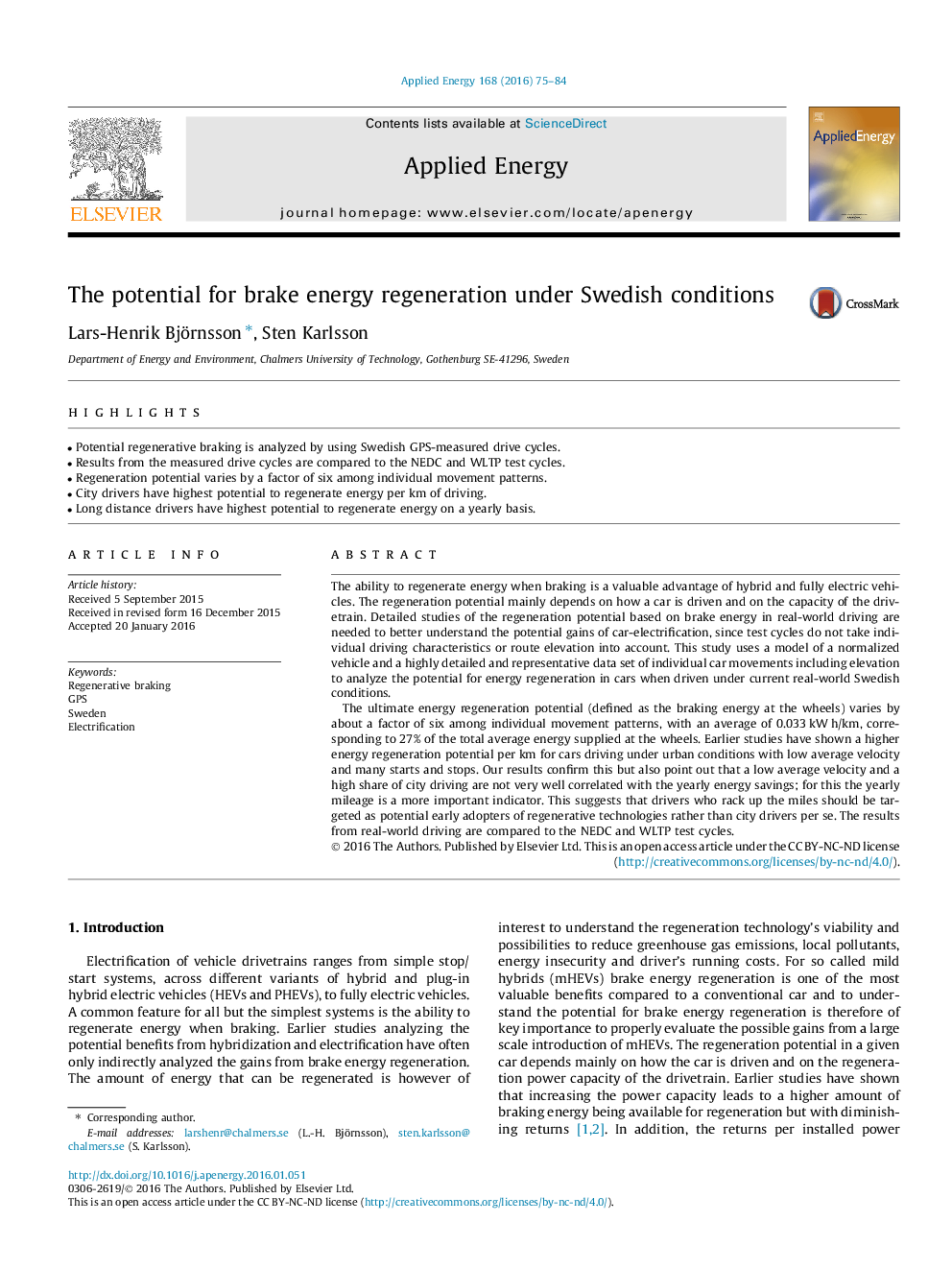| Article ID | Journal | Published Year | Pages | File Type |
|---|---|---|---|---|
| 6683686 | Applied Energy | 2016 | 10 Pages |
Abstract
The ultimate energy regeneration potential (defined as the braking energy at the wheels) varies by about a factor of six among individual movement patterns, with an average of 0.033Â kWÂ h/km, corresponding to 27% of the total average energy supplied at the wheels. Earlier studies have shown a higher energy regeneration potential per km for cars driving under urban conditions with low average velocity and many starts and stops. Our results confirm this but also point out that a low average velocity and a high share of city driving are not very well correlated with the yearly energy savings; for this the yearly mileage is a more important indicator. This suggests that drivers who rack up the miles should be targeted as potential early adopters of regenerative technologies rather than city drivers per se. The results from real-world driving are compared to the NEDC and WLTP test cycles.
Related Topics
Physical Sciences and Engineering
Energy
Energy Engineering and Power Technology
Authors
Lars-Henrik Björnsson, Sten Karlsson,
